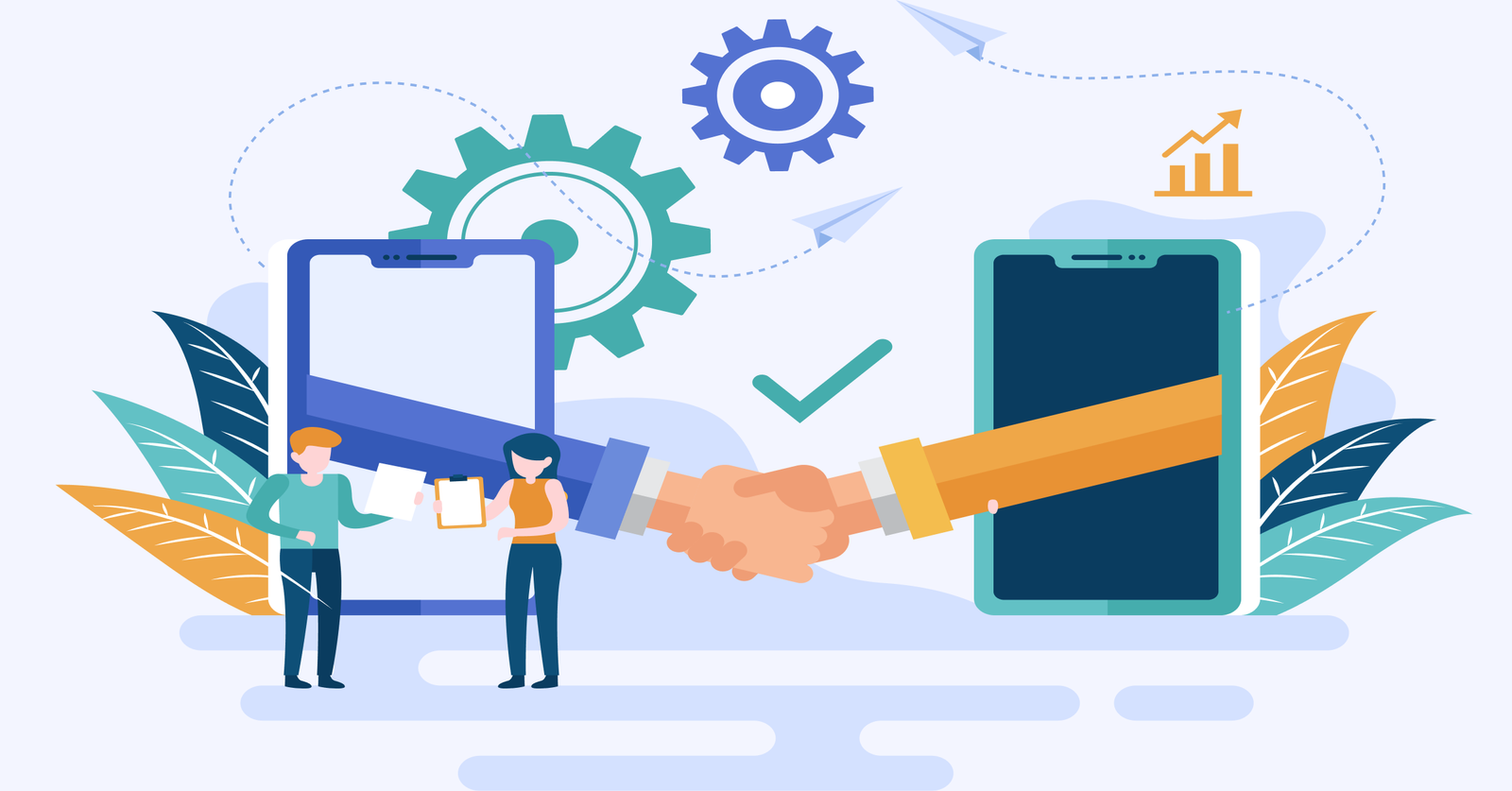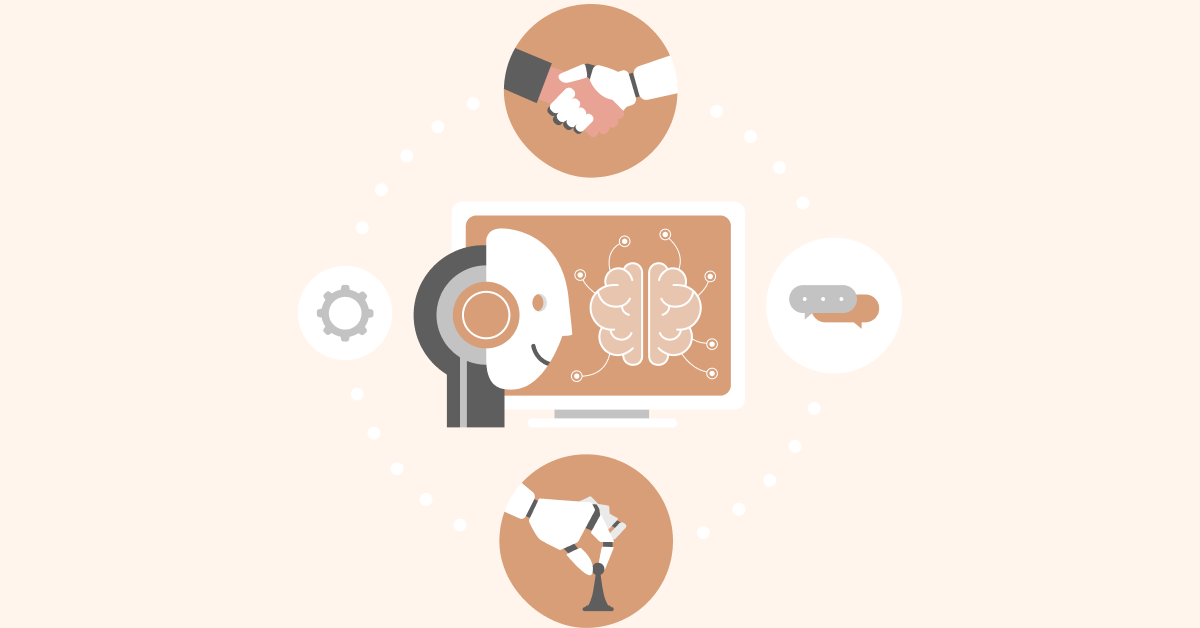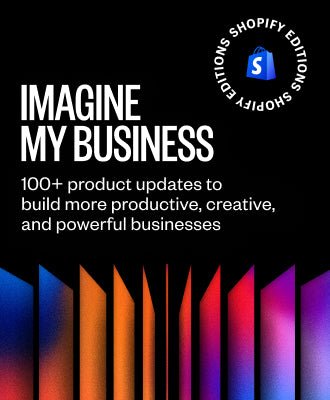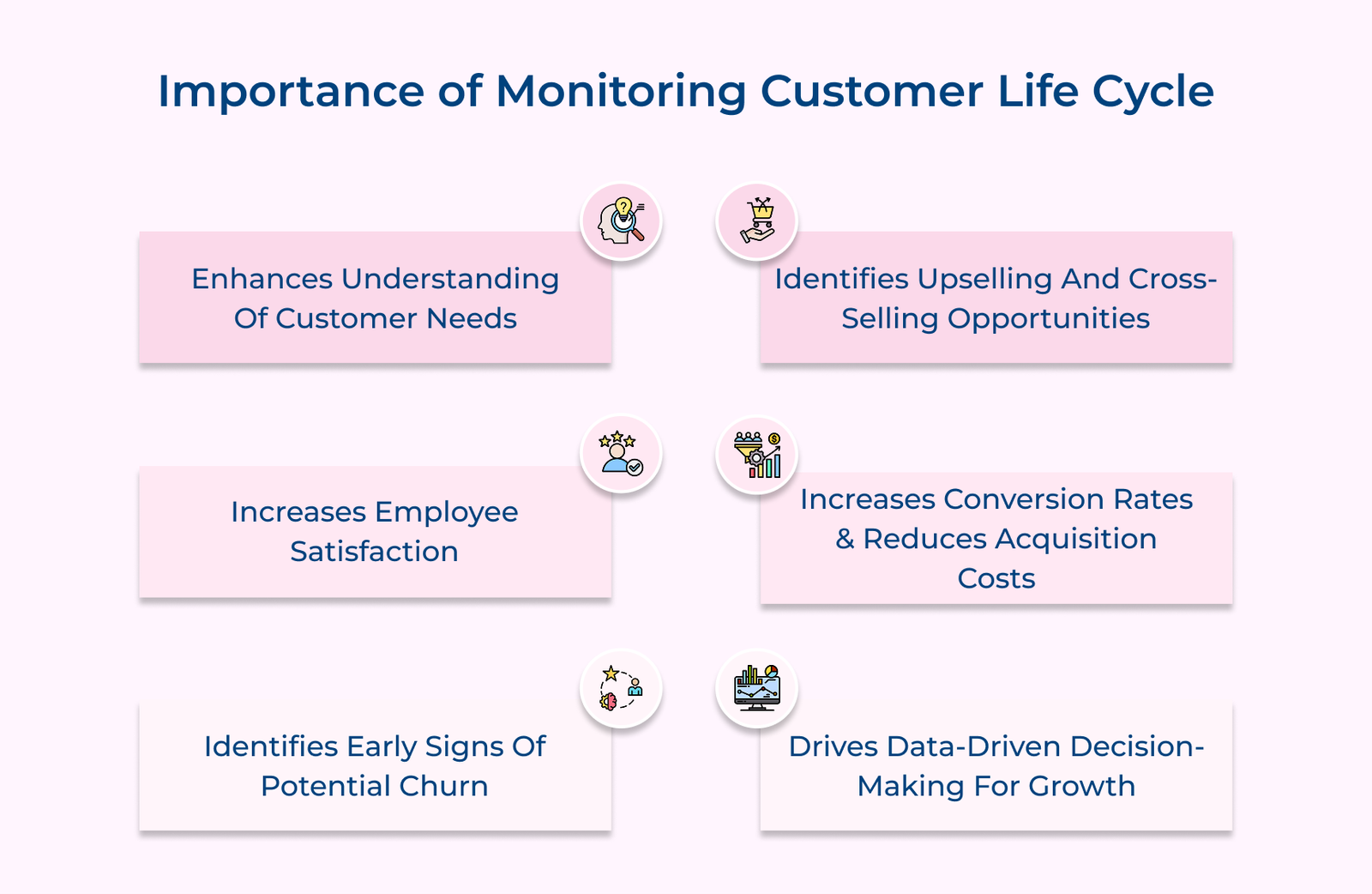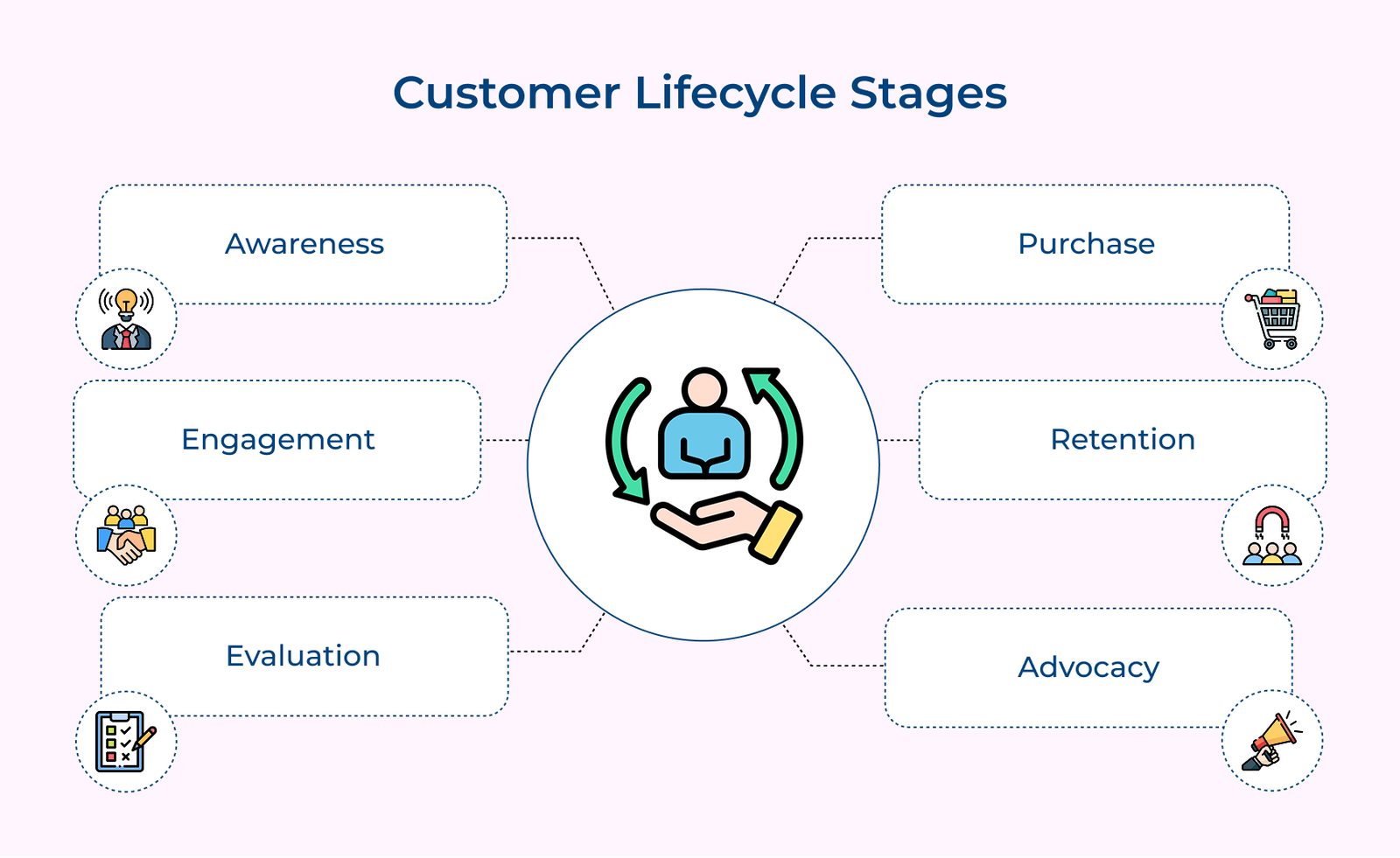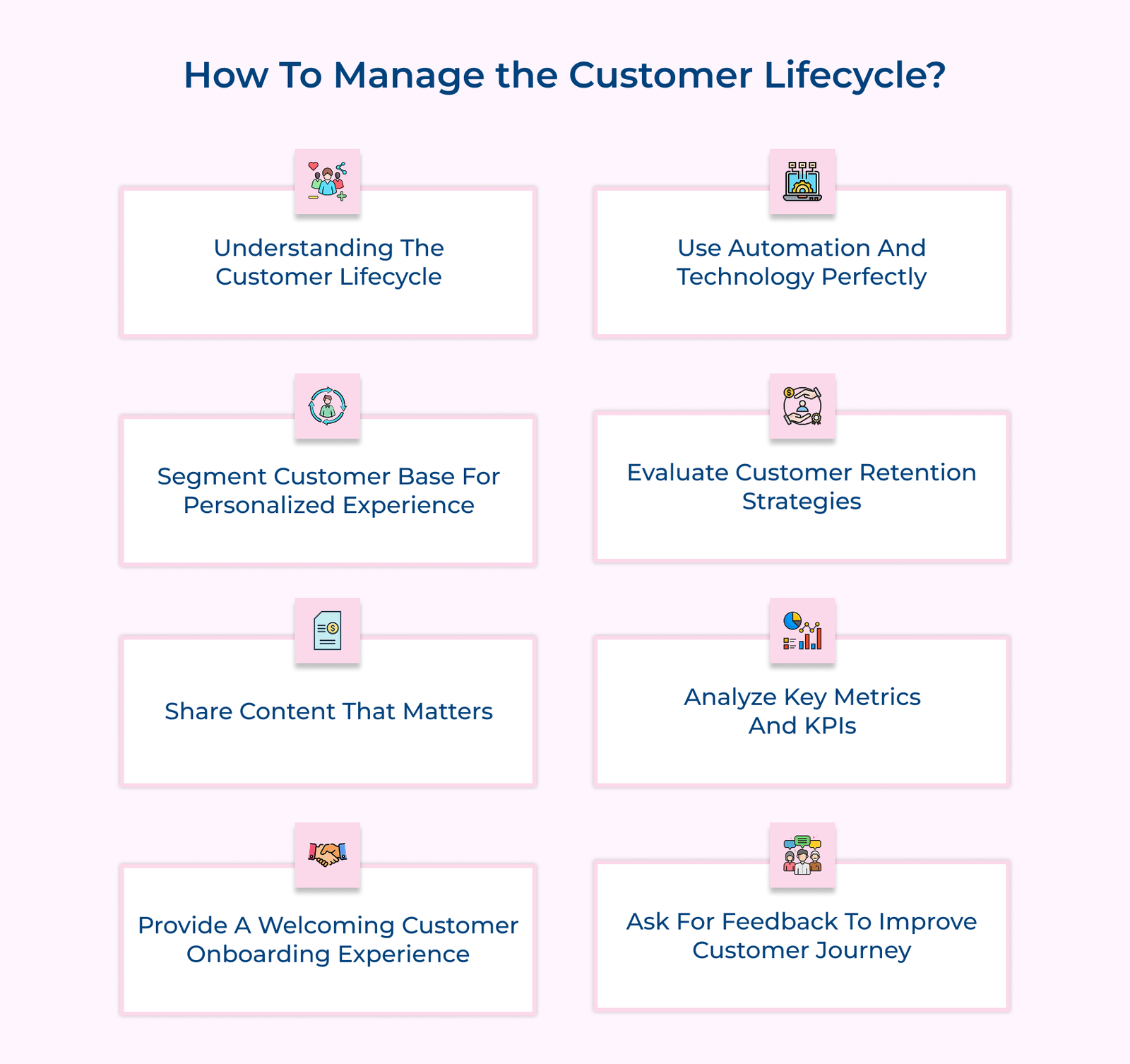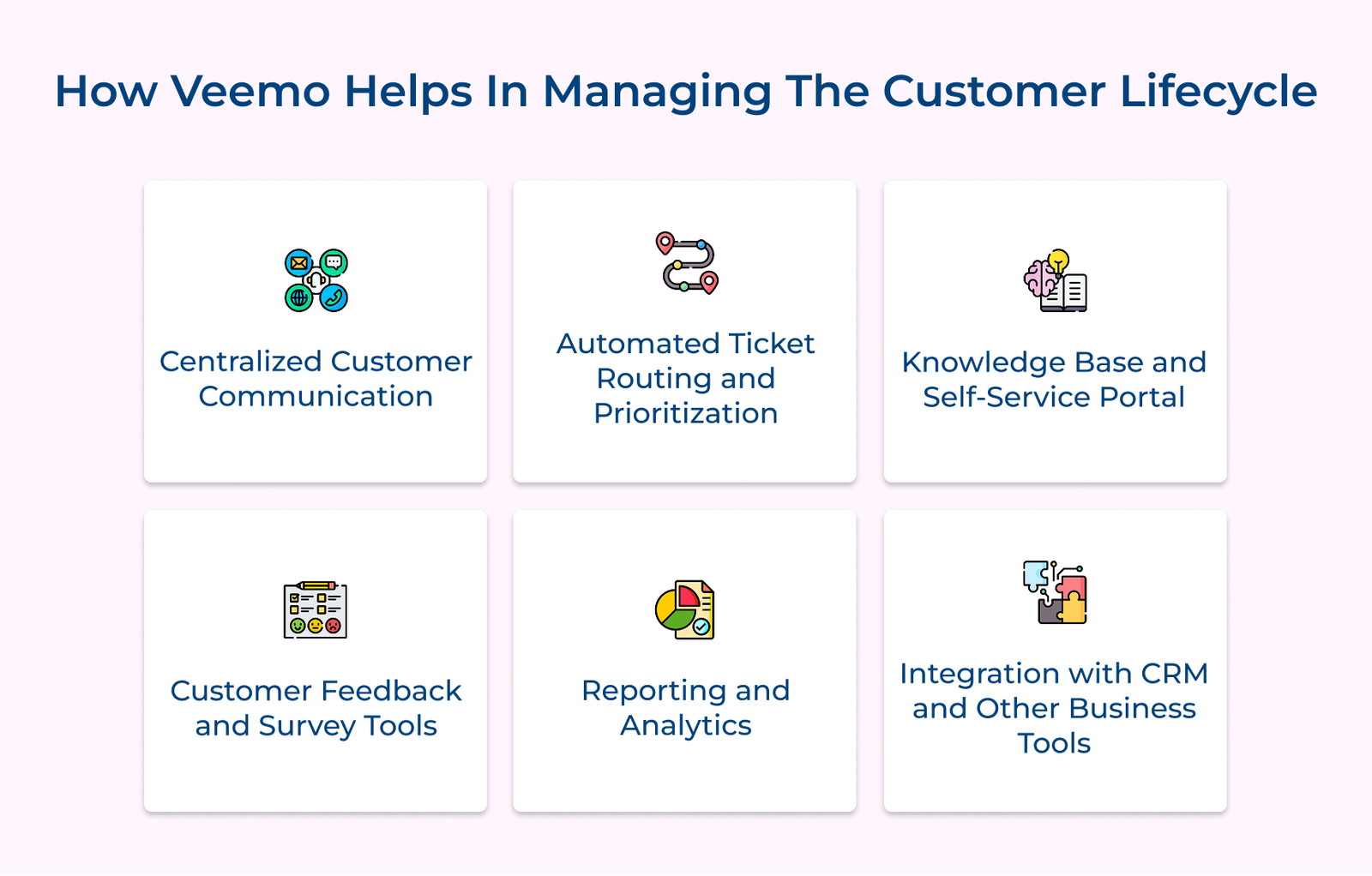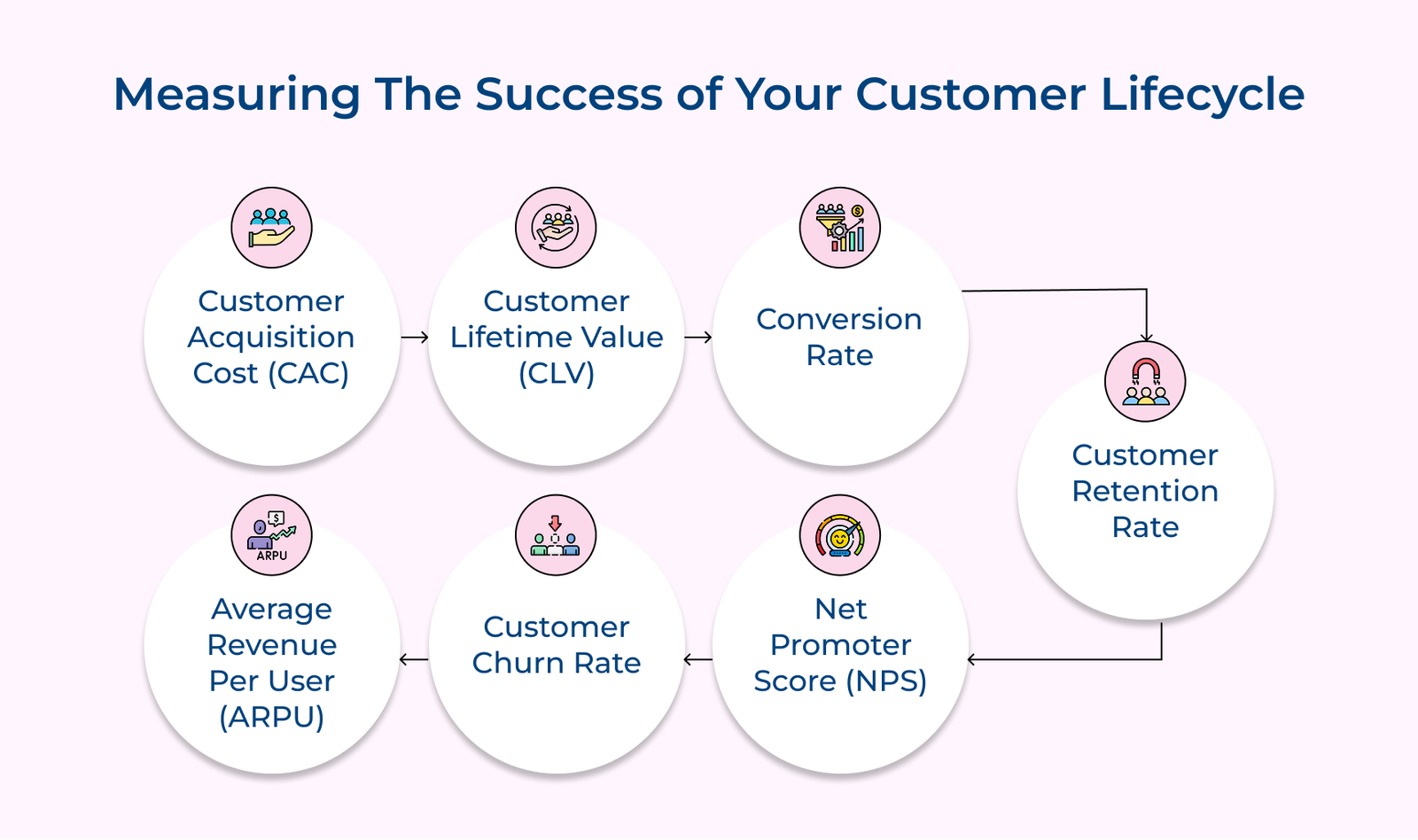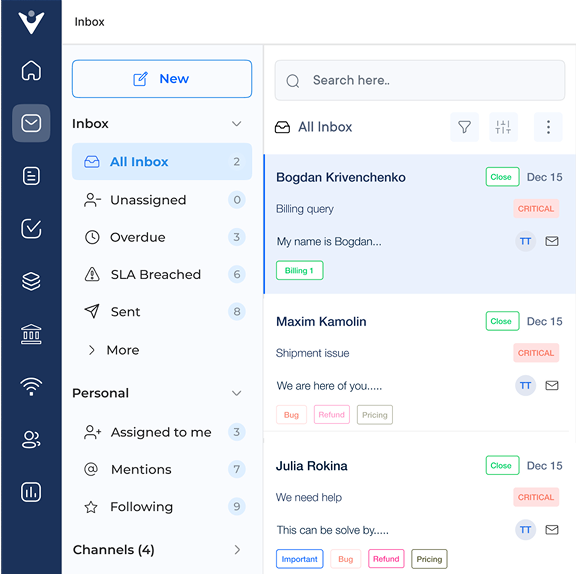1. Understanding the Customer Lifecycle
The customer lifecycle encompasses the stages a customer navigates in their relationship with a business, from initial awareness to loyal advocacy. Successfully managing each phase is vital for business success. Companies can enhance customer satisfaction, improve retention rates and boost profitability by optimizing the stages.
Let’s assume a software company has adopted a comprehensive lifecycle management strategy. They achieved a 25% increase in customer lifetime value and a 40% reduction in churn within just one year by focusing on every stage from product discovery to post-purchase support
Pro tips:
- Map out your current customer lifecycle and identify gaps or weak points in your customer journey.
- Craft tailored strategies and metrics for each stage of the customer lifecycle to ensure a cohesive journey for your customers.
2. Segmenting Customer Base for a More Personalized Experience
Companies can launch targeted marketing campaigns, personalize product offerings and tailor communication strategies by dividing the customer base into distinct segments. After a personalized shopping experience with a brand, 60% of shoppers think they will become repeat buyers. Personalization enhances engagement, boosts customer satisfaction and enhances loyalty.
Segmentation methods include demographic factors (age, gender, income), customer behavioral patterns (purchasing habits, product usage) and psychographic traits (values, interests, lifestyle). Each method provides valuable insights into customer needs and preferences, empowering businesses to develop more effective strategies for each segment.
Actionable tips:
- Dive deep into your customer data to uncover meaningful segments using a variety of criteria.
- Develop tailored communication strategies for each segment, focusing on their specific needs and preferences.
3. Sharing Content that Matters to Your Customers
Relevant content is vital for effective customer engagement. Businesses can position themselves as trusted advisors and keep customers engaged throughout their journey by delivering valuable, timely information. Content mapping ensures that customers receive the right information at the right time.
Taking it a step further, personalizing content for specific customer segments enhances the strategy. Tailoring content to the unique interests of different groups significantly boosts engagement and conversion rates. The personalized approach not only showcases an understanding of customer needs but also strengthens the bond between the customer and the brand.
Actionable tips:
- Create a content calendar that aligns with different lifecycle stages and customer segments.
- Leverage data analytics to monitor content performance and continuously enhance your strategy based on customer engagement metrics.
4. Providing a Smooth and Welcoming Customer Onboarding Experience
First impressions are vital in shaping how customers view a brand. A seamless onboarding experience lays the groundwork for a strong, long-lasting relationship, enhancing satisfaction and loyalty. Key elements include clear communication, step-by-step guidance and accessible support.
An effective onboarding process should both educate customers about the product and make them feel valued. It can involve personalized welcome messages, interactive tutorials and proactive check-ins to ensure customers maximize their experience.
Pro tips:
- Create a detailed onboarding checklist that helps customers smoothly navigate each step of getting started with your product or service.
- Implement a system for gathering feedback during the onboarding process to identify and address any pain points quickly.
5. Using Automation and Technology Effectively
Automation is vital in client lifecycle management, enabling businesses to provide timely, personalized experiences at scale while boosting efficiency and consistency. Key tools include CRM systems, marketing automation platforms and AI chatbots.
Balancing automation with a personal touch is crucial. Technology should enhance human interactions, not replace them. Use automation for routine tasks and data analysis, allowing your team to focus on complex customer interactions that demand empathy.
Actionable tips:
- Identify repetitive tasks in your customer lifecycle management and implement automation solutions to streamline these processes.
- Regularly assess automated interactions to ensure they feel personal, making adjustments as needed to enhance the customer experience.
6. Evaluating Customer Retention Strategies Instead of Acquisition
While acquiring new customers is vital, retention strategies often deliver a greater ROI. Loyal customers not only purchase more frequently but also become enthusiastic brand advocates. Successful retention tactics include loyalty programs, personalized communication, proactive customer support and ongoing value enhancement.
Measuring impact is essential to refine the strategies and showcase their effectiveness. Key metrics to monitor include customer lifetime value, churn rate and repeat purchase rate. Businesses can pinpoint successful tactics and areas needing improvement by analyzing the figures.
Actionable tips:
- Implement a loyalty program that rewards customers for repeat purchases and brand advocacy.
- Launch regular “win-back” campaigns to rekindle interest among dormant customers with personalized offers and tailored content.
7. Analyzing Key Metrics and KPIs
Businesses must monitor key metrics at every stage, such as customer acquisition cost, conversion rates, customer lifetime value and net promoter score. The KPIs reveal the health of customer relationships and the success of lifecycle strategies.
A variety of tools, from robust CRM systems to specialized analytics platforms, can help track and analyze the data. The goal is to select tools that seamlessly integrate with existing systems and deliver actionable insights. Businesses can continuously optimize their customer experience and lifecycle management strategies by leveraging the insights.
Pro Tips:
- Establish a dashboard of key metrics for each lifecycle stage and review it regularly with your team.
- Leverage predictive analytics to spot potential churn risks and take proactive steps to retain at-risk customers.
8. Asking for Client Feedback and Testimonials to Continuously Improve Customer Journey
Customer feedback is essential for refining the customer journey, offering direct insights into experiences, preferences and pain points. Gathering feedback through surveys, interviews, focus groups and social media monitoring can provide valuable testimonials that double as powerful marketing tools.
Acting on customer input shows that you value their opinions, leading to meaningful improvements in products and services. The responsiveness not only enhances the customer experience but also builds a sense of partnership, boosting loyalty and advocacy for your brand.
Actionable tips:
- Establish a structured method for gathering feedback at crucial moments in the customer journey, like after purchases or customer service interactions.
- Create a process for regularly reviewing and acting on customer feedback, involving cross-functional teams to address issues holistically.
How Veemo Helps In Managing The Customer Lifecycle
We’ll explore how Veemo can transform your approach to customer lifecycle management and ensure sustainable success for your business.

